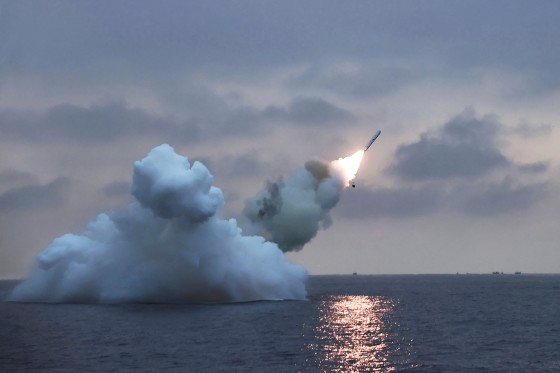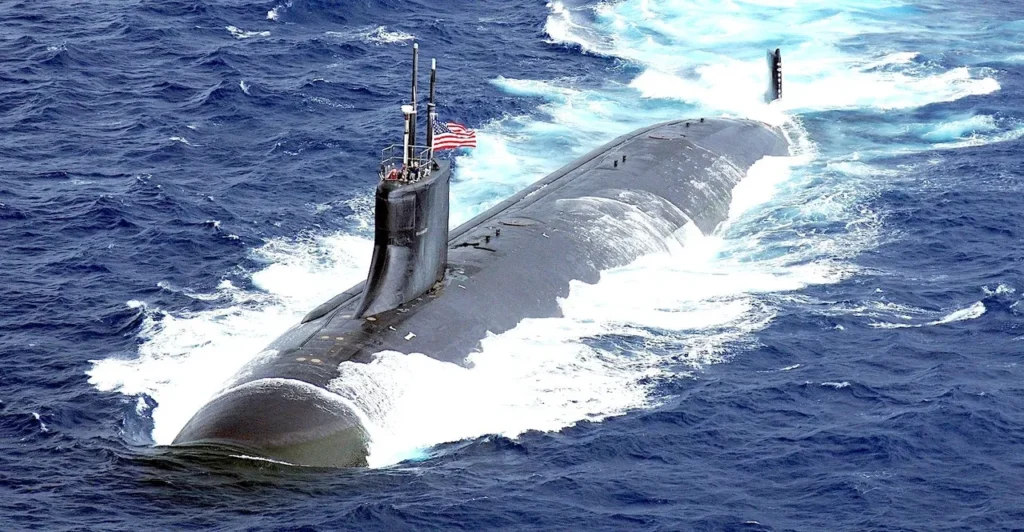
In the dynamic realm of naval warfare, the development of advanced technologies is pivotal for maintaining strategic advantages. One such technology, the ASROC40 (Anti-Submarine Rocket 40), is revolutionizing anti-submarine warfare (ASW) and reshaping naval strategies across the globe. This article will explore the key features, operational advantages, and implications of ASROC 40 on modern naval warfare, illustrating why it is considered a game-changer in undersea warfare.
1. Introduction
The maritime domain has always been a theater of conflict, and submarines have played a critical role in naval warfare. The increasing sophistication of submarine technologies has necessitated the development of equally advanced countermeasures. The ASROC 40 emerges as a cutting-edge solution, addressing the challenges posed by modern submarines. This article examines ASROC 40’s significance in undersea warfare, detailing its features, advantages, and future potential.
The Evolution of Anti-Submarine Warfare
Anti-submarine warfare has undergone significant transformations since the advent of submarines. Initially, ASW strategies relied heavily on passive detection methods, such as sonar systems, coupled with conventional munitions like depth charges and torpedoes. As submarines evolved in stealth and capability, the need for more effective ASW solutions became apparent.
The introduction of guided weapons represented a major leap forward, allowing naval forces to engage underwater threats with greater accuracy and range. However, earlier systems often faced limitations in versatility and operational reach. The ASROC 40 is designed to overcome these limitations, providing naval forces with a robust and adaptable tool for countering submarine threats.
Key Features of ASROC40
The ASROC 40 (Anti-Submarine Rocket 40) revolutionizes undersea warfare with several standout features:
Extended Range and Precision Targeting
ASROC40 offers an extended range, allowing naval vessels to engage enemy submarines from safer distances. Its precision targeting ensures high accuracy, reducing collateral damage while increasing the likelihood of a successful hit.
Multi-Role Capability
This system is versatile, excelling not only in anti-submarine warfare but also in surface and land attacks. Its multi-role capability enhances operational flexibility, enabling naval forces to tackle various threats effectively.
Advanced Guidance Systems
ASROC 40 features sophisticated guidance systems that use GPS and inertial navigation for precise trajectory adjustments. Real-time data processing enhances situational awareness, allowing for informed decision-making during engagements.
Stealth Features
Incorporating stealth technologies, ASROC40 reduces its radar cross-section, making it harder for enemy defenses to detect and intercept. This enhances its effectiveness against modern submarine threats.
Comparison with Previous Versions
Previous iterations of ASROC systems, while effective in their time, lacked the comprehensive features offered by ASROC 40. Earlier models had limited range, relied on basic guidance systems, and were primarily focused on ASW. In contrast, ASROC 40 combines enhanced operational reach with multi-role capabilities, reflecting the modern demands of naval warfare.

Operational Advantages of ASROC 40
Enhanced Range and Precision
The capability to engage submarines from extended distances is a game-changer in naval engagements. Traditional ASW methods often required vessels to close in on their targets, exposing them to potential counter-attacks. ASROC 40 allows forces to maintain a safer distance, significantly enhancing the safety and survivability of naval assets.
The precision targeting systems in ASROC 40 utilize advanced algorithms and real-time data processing to ensure that missiles can effectively track and engage moving underwater threats. This precision is crucial in modern warfare, where a single missed shot can have dire consequences.
Advanced Guidance Systems
ASROC40 incorporates cutting-edge guidance technologies, including GPS and inertial navigation systems, that enable it to adjust its flight path based on real-time environmental conditions. This adaptability enhances the missile’s effectiveness against agile underwater targets, ensuring successful engagements even in complex combat scenarios.
Moreover, the system can leverage data from multiple sensors, including satellites and naval reconnaissance, to refine its targeting capabilities. This integration of information not only improves targeting accuracy but also enhances situational awareness for naval commanders.
Multi-Role Capability
The versatility of ASROC 40 is one of its most significant advantages. While primarily designed for anti-submarine warfare, it can also engage surface vessels and strike land targets, broadening the scope of naval operations. This multi-role capability allows commanders to respond to diverse threats with a single weapon system, optimizing resource allocation and operational planning.
How to Say Bensiot and Quint A Professional Pronunciation Guide
Integration with Modern Naval Platforms
ASROC 40 is designed for compatibility with various modern naval platforms, including destroyers, frigates, and aircraft carriers. This flexibility allows for rapid deployment and effective utilization across a wide range of naval missions. The seamless integration into existing naval architectures ensures that fleets can quickly leverage ASROC40’s capabilities without extensive reconfiguration.
This compatibility is crucial in maintaining operational readiness, as naval forces can incorporate ASROC 40 into their strategies without undergoing significant changes to their existing systems.
Stealth and Evasion Technologies
In an era where stealth is paramount, ASROC 40 incorporates advanced technologies to enhance its survivability against enemy defenses. Features such as a reduced radar cross-section and optimized flight trajectories minimize the likelihood of interception, allowing ASROC 40 to engage well-defended targets successfully.
These stealth features are critical in countering advanced submarine threats, ensuring that ASROC 40 can effectively fulfill its mission in challenging environments.
Challenges and Considerations
While ASROC 40 presents numerous advantages, several challenges and considerations must be acknowledged:
- Evolving Threat Landscape: The continuous advancement of submarine technologies poses an ongoing challenge. To maintain its effectiveness, ASROC40 must be regularly updated to counter emerging threats, including unmanned underwater vehicles (UUVs) and advanced countermeasures.
- Training and Operational Readiness: The successful implementation of ASROC 40 requires extensive training for naval personnel. Operators must be proficient in the use of advanced systems to maximize effectiveness in combat scenarios. Investment in comprehensive training programs is essential to ensure that naval forces can fully leverage ASROC 40’s capabilities.
The Future of ASROC40 in Undersea Warfare
The future of ASROC 40 looks promising as advancements in technology continue to reshape its capabilities. Several trends may influence its development:
- Integration with Artificial Intelligence: The potential incorporation of artificial intelligence (AI) could revolutionize ASROC 40’s operational capabilities. AI may enable real-time analysis of threats, enhancing decision-making and improving targeting efficiency.
- Collaborative Defense Strategies: The global security landscape is increasingly characterized by cooperative defense efforts. ASROC 40’s compatibility with various platforms positions it as a vital component in joint maritime operations, fostering deeper strategic partnerships among allied forces.
Global Implications of ASROC 40
The deployment of ASROC40 carries significant global implications, influencing regional security dynamics and altering the balance of power in naval warfare.
Regional Security Dynamics
The introduction of ASROC 40 may shift regional security dynamics, especially in areas with heightened submarine activity, such as the South China Sea. Countries may feel compelled to enhance their ASW capabilities in response, leading to an arms race that could exacerbate regional tensions.
This shift in military capabilities has the potential to reshape geopolitical relationships, impacting trade routes and diplomatic interactions.
The Role of Alliances
ASROC40 can strengthen alliances among nations with shared security interests. Collaborative development and deployment of ASROC 40 can enhance interoperability, allowing allied forces to conduct more effective joint operations.
As nations recognize the importance of collective security, ASROC 40 may become a focal point for cooperation, promoting stronger alliances and partnerships in addressing common maritime threats.
Impact on Naval Warfare Doctrine
The deployment of ASROC 40 may necessitate a reevaluation of existing naval warfare doctrines. As navies adapt to advanced ASW systems, new operational concepts may emerge, emphasizing the integration of cutting-edge technologies in undersea warfare.
The lessons learned from ASROC 40 deployments will likely inform future naval strategies, shaping the evolution of military doctrines in the context of maritime operations.
Conclusion
ASROC 40 represents a monumental advancement in anti-submarine warfare, offering naval forces enhanced capabilities that will redefine the dynamics of undersea combat. With its combination of extended range, precision targeting, multi-role functionality, and stealth features, ASROC40 is a true game-changer in modern naval warfare.
As nations continue to confront evolving maritime threats, ASROC 40 will play a pivotal role in safeguarding national interests and ensuring the effectiveness of naval operations. By embracing technological advancements and investing in the future of undersea warfare, navies worldwide can leverage ASROC 40 to maintain a competitive edge in an increasingly complex global security landscape.
In summary, the adoption of ASROC 40 signifies not just a technological leap but a strategic evolution in how nations approach undersea warfare, making it an indispensable asset for modern naval forces.